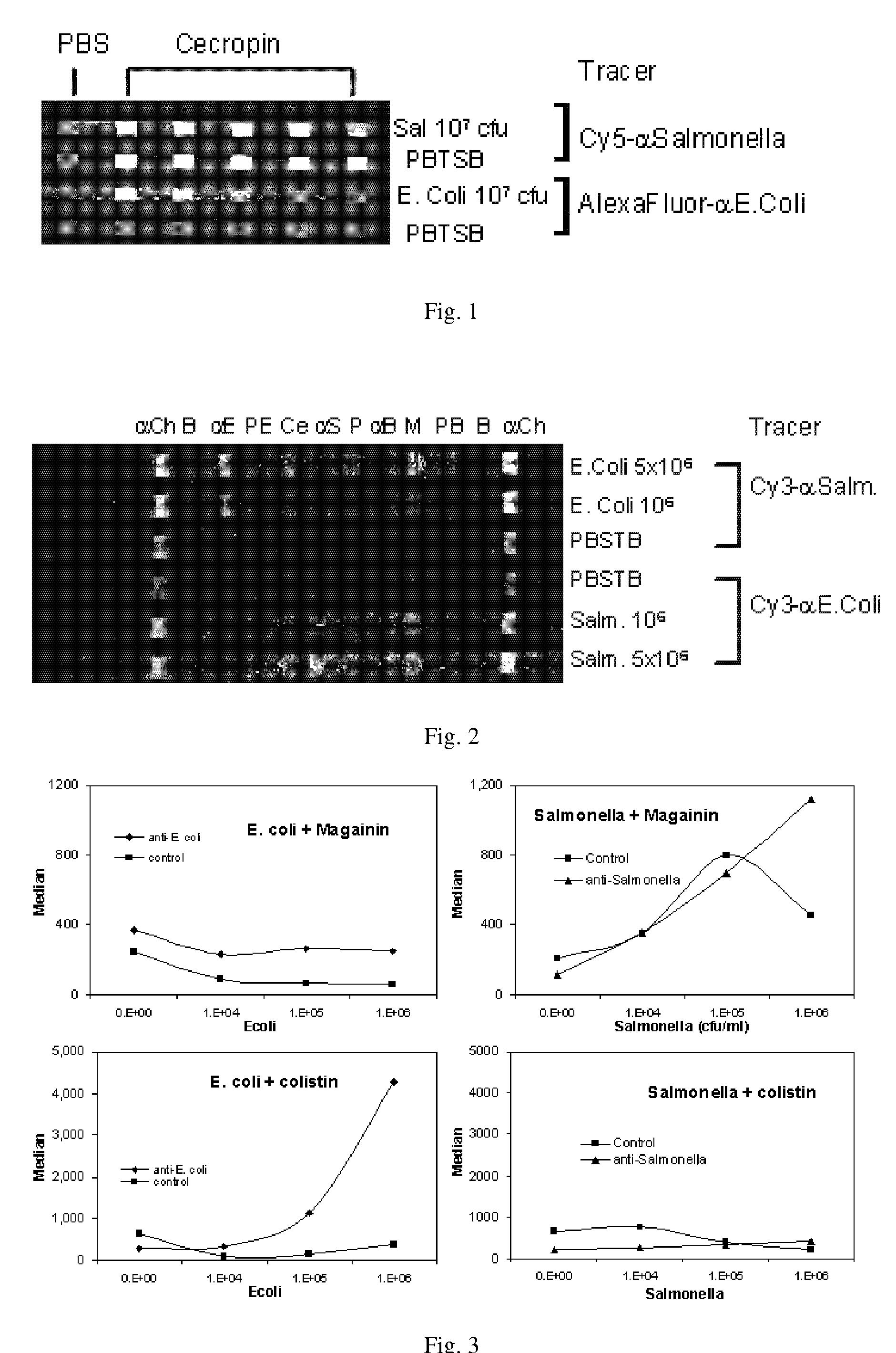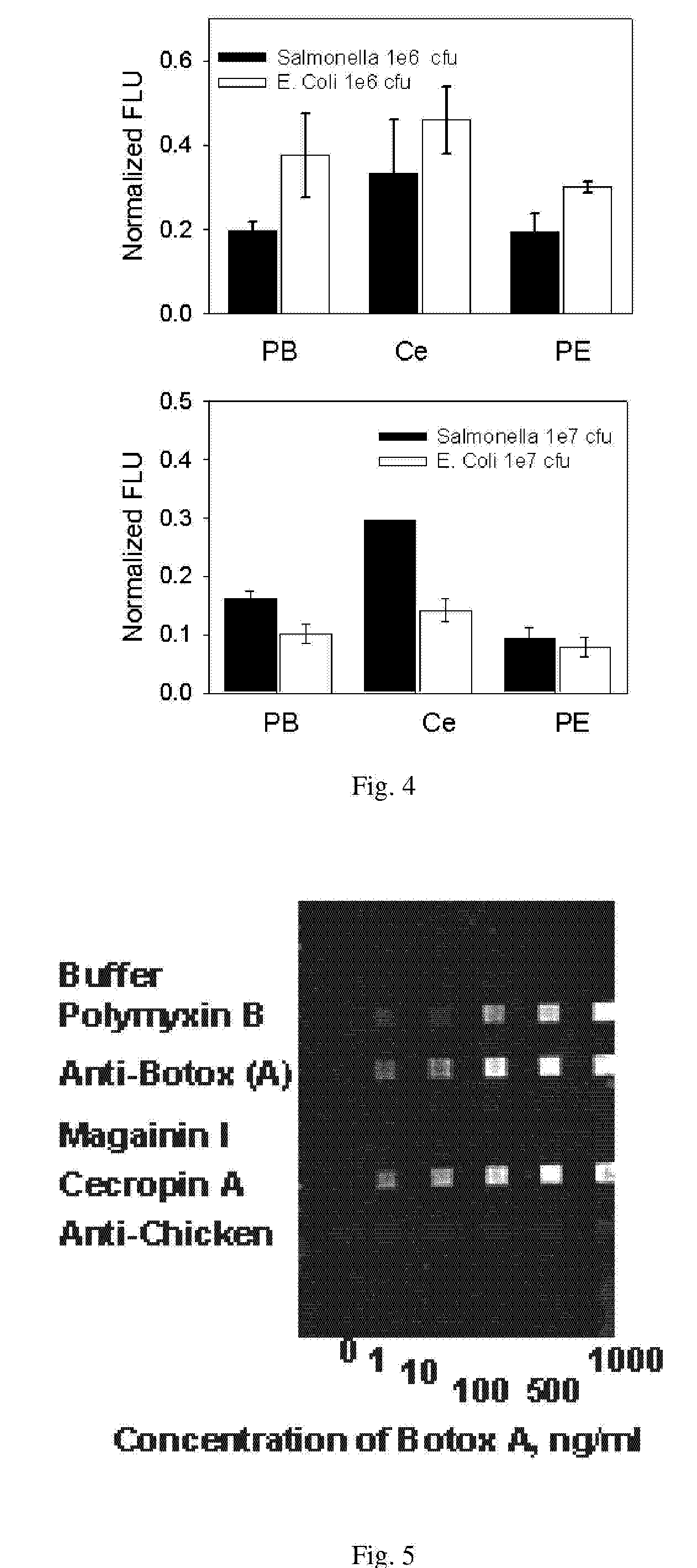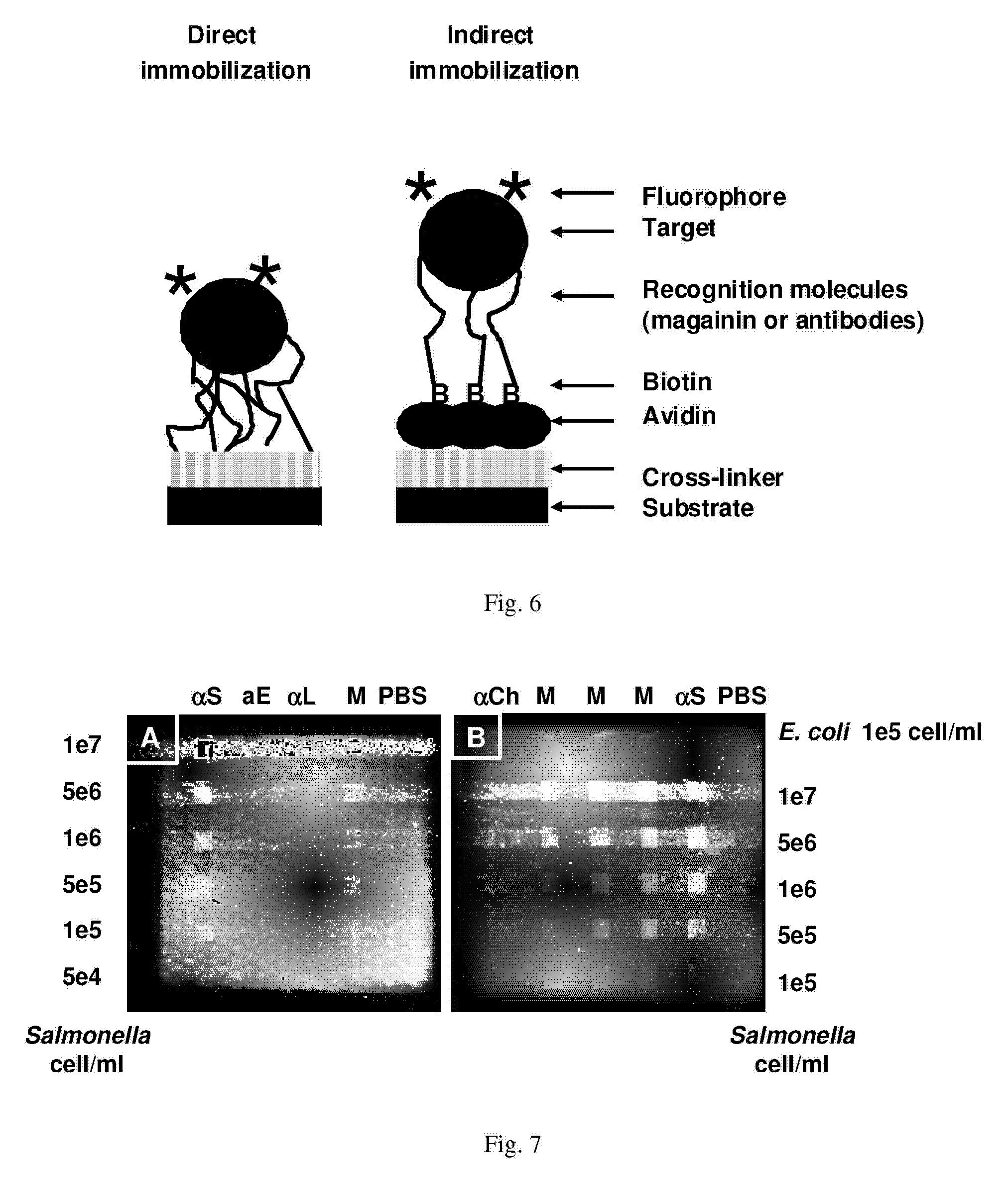Affinity-based detection of biological targets
a technology of biological targets and affinity-based detection, which is applied in the field of biological detection, can solve the problems of increasing the complexity and potential for non-specific or cross-reactive binding, increasing the cost and time-consuming of large-scale production of monoclonals, and antibody-based assays may never be stable enough for long-term sensor applications
- Summary
- Abstract
- Description
- Claims
- Application Information
AI Technical Summary
Benefits of technology
Problems solved by technology
Method used
Image
Examples
example 1
[0074]Array Biosensor—Immobilization of peptides and antibodies—FIG. 6 schematically illustrates immobilization of AMPs on a glass slide followed by binding of a fluorescent target. The direct method has attachment of recognition molecules to the substrate through cross-linking chemistry with GMBS. Indirect immobilization has attachment of recognition molecules to the substrate through an avidin-biotin interaction. The immobilization methodology utilizes sequential incubations with a thiol-terminated silane, the heterobifunctional crosslinker N-[γ-maleimidobutyryloxy]-succinimide ester (GMBS), and a protein or peptide containing one or more primary amines. Briefly, standard soda-lime microscope slides (Daigger, Vernon Hills, Ill.) cleaned with 10% KOH (w / v) in methanol were treated for 1 hour, under nitrogen, with a 2% solution of 3-mercaptopropyl trimethoxysilane in toluene. The slides were then rinsed with toluene, dried under nitrogen, and incubated for 30 minutes in 1 mM GMBS cr...
example 2
[0098]Luminex—“Sandwich”-type Luminex assays had been developed, using antibodies for target capture (initial recognition) and AMPs for detection of bound targets (FIG. 10, format A). Development of AMP-capture assays for Luminex (FIG. 10, format B) has begun; these results from Luminex should be more comparable to those from the Array Biosensor for which AMP-capture assays have been developed. To date, this system has successfully shown capture of E. coli, Salmonella, and bot toxoid A using AMP-derivatized Luminex beads (FIG. 11). Although LODs for E. coli and Salmonella were the same as those obtained in antibody-based Luminex assays (102-103 on bactenecin and 105 cfu / ml on PMB, respectively), bot toxoid A could be detected only at extremely high concentrations (1 μg / ml); these latter results contrast greatly with results obtained using the Array Biosensor. Neither Y pestis nor Coxiella could be detected at the concentrations tested on Luminex using AMP-coated Luminex beads for ca...
example 3
[0100]Binding patterns—Above, differences in binding between E. coli and Salmonella, two very closely related species, using AMP tracer beads in Luminex assays are demonstrated. This was extended to include additional species on Luminex using AMP tracers (FIG. 12) and as well as AMP-Lx beads for capture (FIG. 13). Similar results have been observed in the Array Biosensor (FIG. 14). Several particularly noteworthy observations have been made with regard to binding patterns. Bot toxoids A and B, antigenically similar proteins, bind to different AMPs. The binding affinities for melittin in the assays run contrary to the hypothesis that inhibition of bot toxins by various AMPs is most likely caused by AMP binding to active sites. Melittin contains the KR sequence required for cleavage by bot toxin A peptidase activity, but is bound preferentially by toxoid B; conversely, cecropin A is bound preferentially by toxoid A, but does not contain any of the sequences required for cleavage by to...
PUM
| Property | Measurement | Unit |
|---|---|---|
| pH | aaaaa | aaaaa |
| concentration | aaaaa | aaaaa |
| pH | aaaaa | aaaaa |
Abstract
Description
Claims
Application Information
 Login to View More
Login to View More - R&D
- Intellectual Property
- Life Sciences
- Materials
- Tech Scout
- Unparalleled Data Quality
- Higher Quality Content
- 60% Fewer Hallucinations
Browse by: Latest US Patents, China's latest patents, Technical Efficacy Thesaurus, Application Domain, Technology Topic, Popular Technical Reports.
© 2025 PatSnap. All rights reserved.Legal|Privacy policy|Modern Slavery Act Transparency Statement|Sitemap|About US| Contact US: help@patsnap.com



